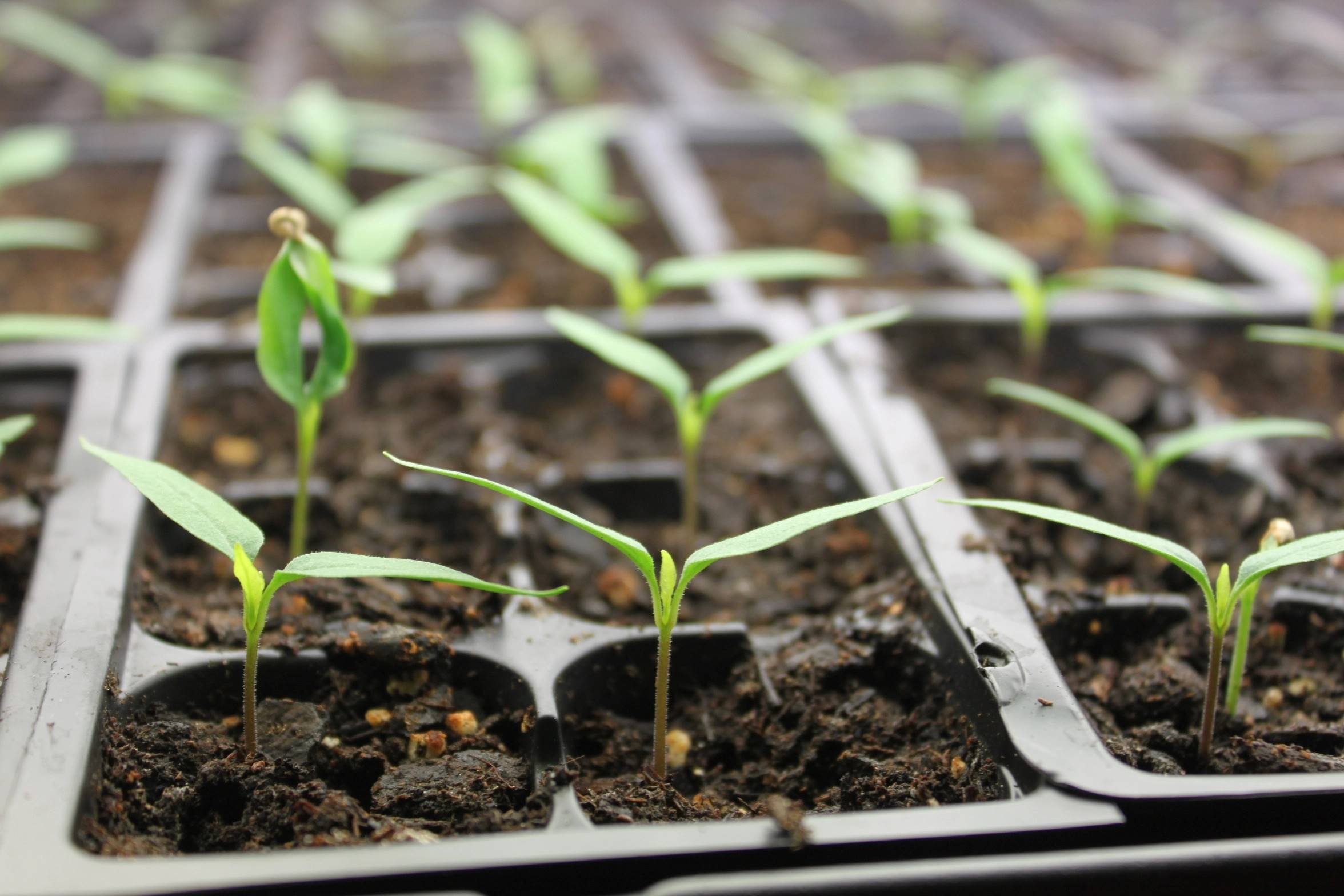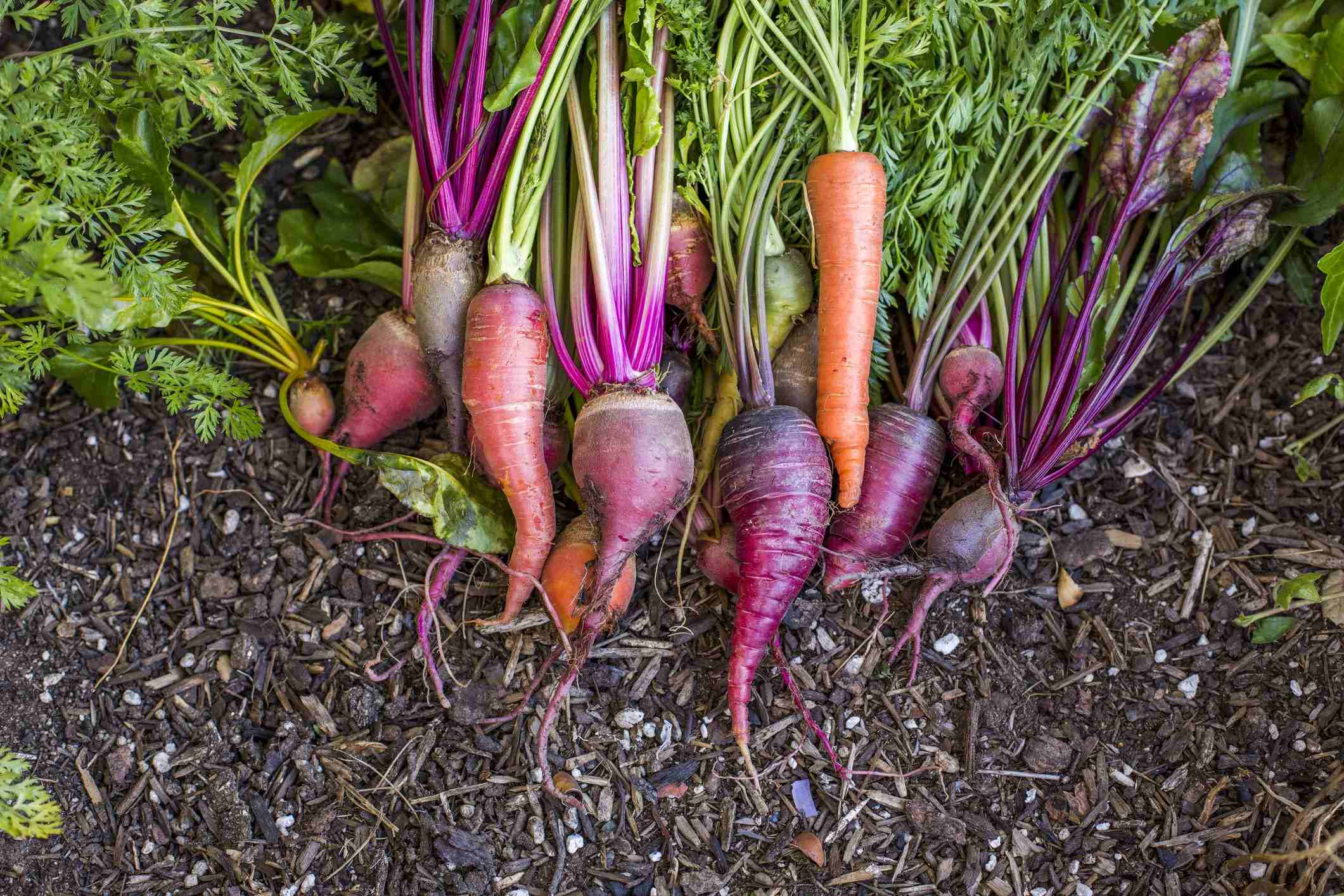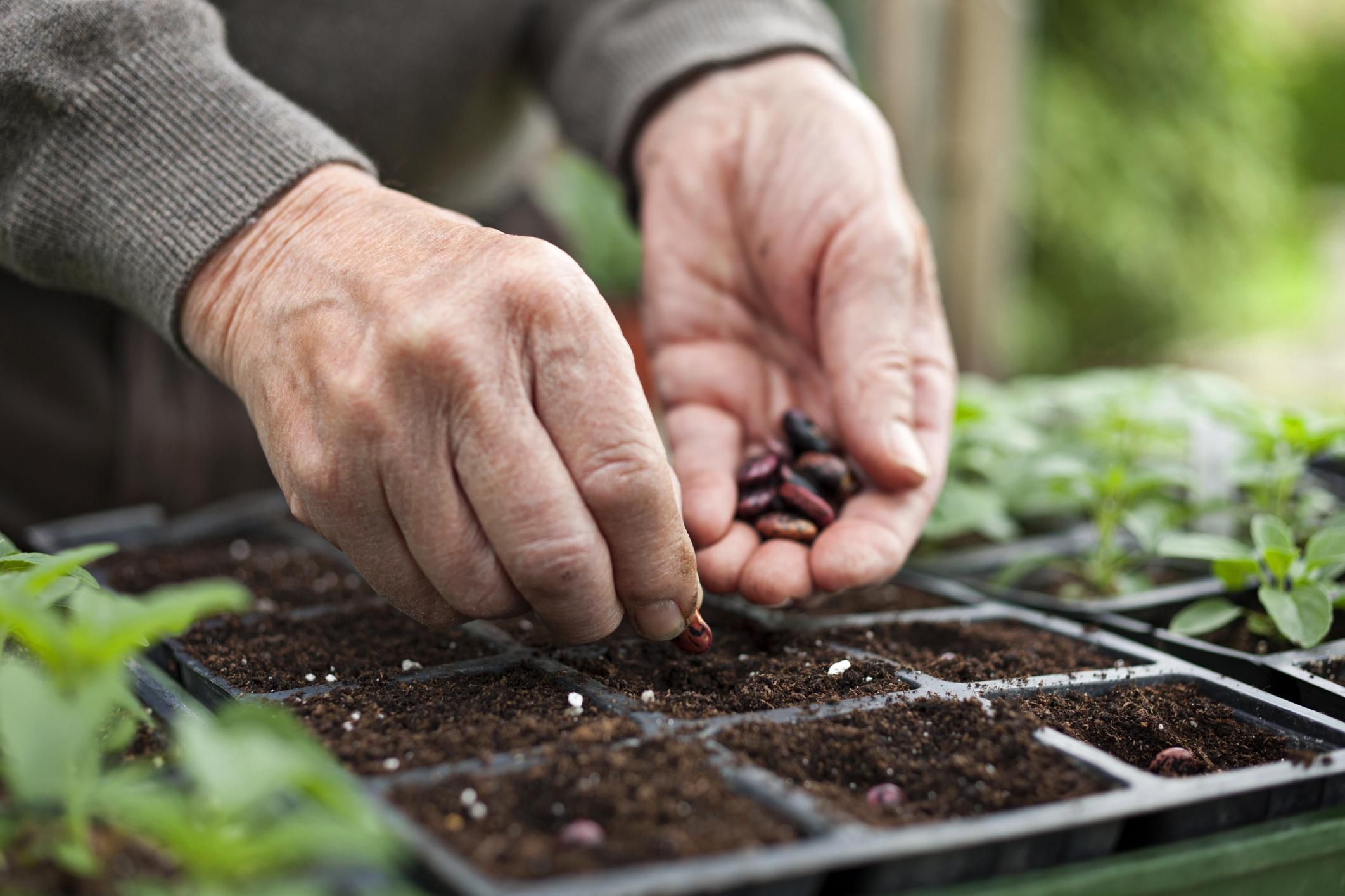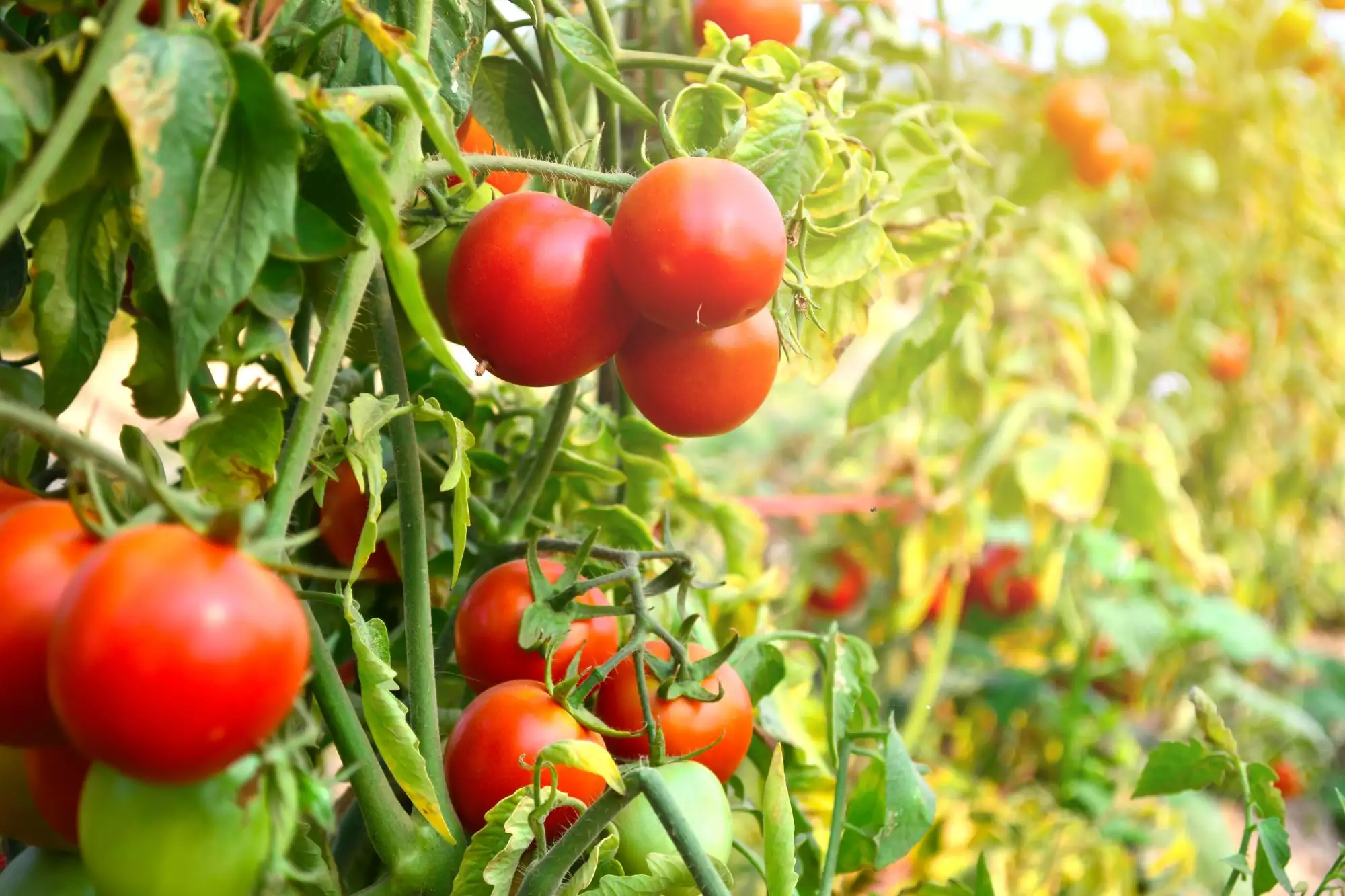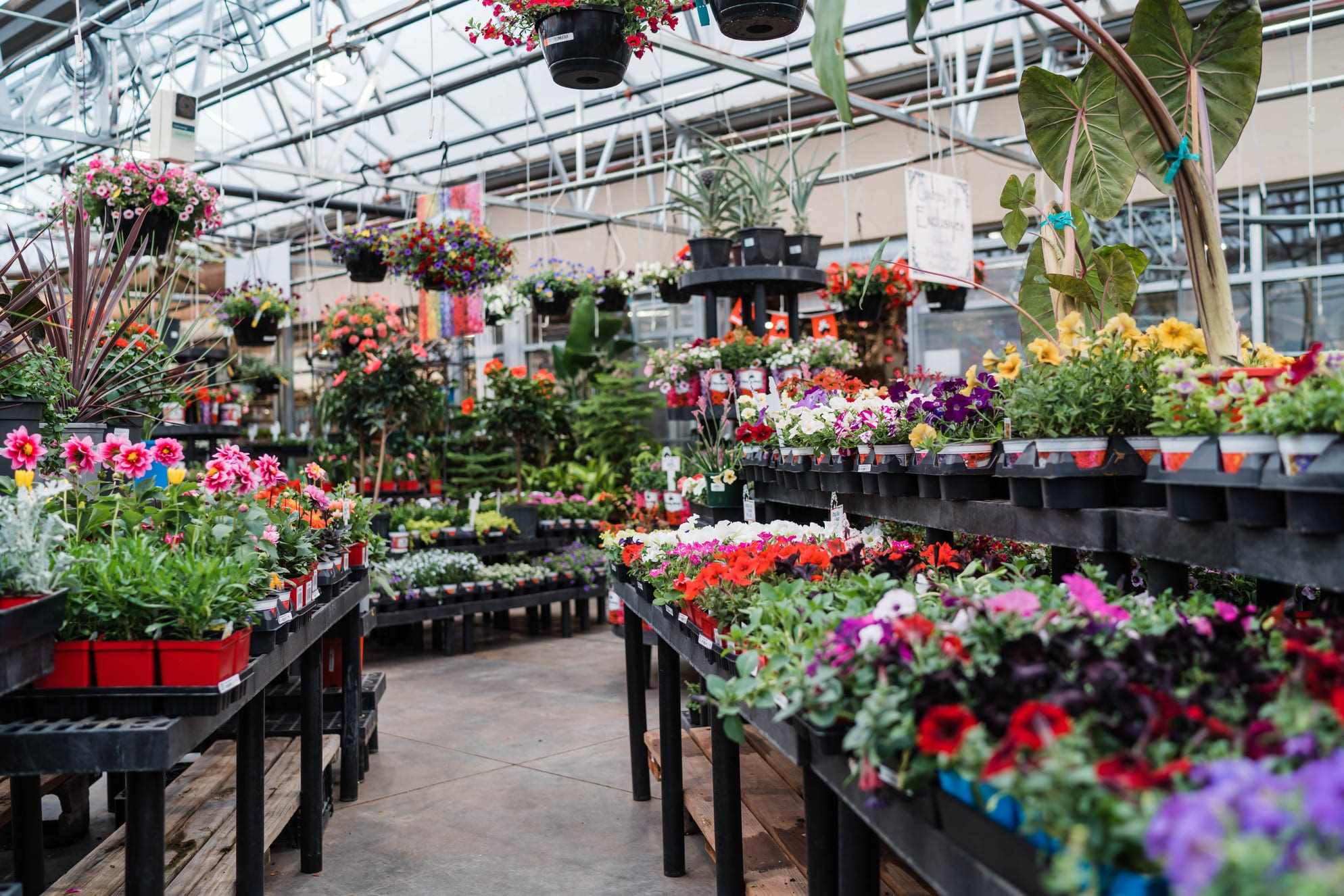Home>Gardening Techniques>Seasonal Gardening>When To Start Planting For Fall


Seasonal Gardening
When To Start Planting For Fall
Modified: January 22, 2024
Discover the best time to begin planting for fall with our seasonal gardening guide. Get tips and advice for a successful autumn garden.
(Many of the links in this article redirect to a specific reviewed product. Your purchase of these products through affiliate links helps to generate commission for Chicagolandgardening.com, at no extra cost. Learn more)
Table of Contents
Introduction
As the summer heat begins to subside and the leaves start to turn golden, it’s time to shift our focus to the joy of fall gardening. Fall is a wonderful season for planting and growing a variety of vegetables and flowers. Whether you’re an experienced gardener or just starting out, taking advantage of the fall planting season can yield a bountiful harvest and vibrant garden.
Fall gardening offers a unique set of benefits compared to other seasons. The cooler temperatures and increased moisture create an optimal environment for plant growth. Furthermore, pests and weeds tend to be less prevalent in the fall, reducing the need for harsh chemicals and extensive maintenance. Fall also presents an opportunity to extend the gardening season, allowing you to enjoy fresh produce well into autumn.
However, to make the most of your fall gardening efforts, it’s important to understand the factors to consider and develop a proper planting schedule. This guide will provide you with expert advice on when to start planting for fall, how to prepare your soil, select suitable plants, and maintain your garden throughout the season.
Factors to Consider
Before you dive into your fall gardening project, there are several factors to consider to ensure a successful and thriving garden. By taking these factors into account, you can make informed choices and set yourself up for a bountiful harvest.
First and foremost, understanding your hardiness zone is crucial. Hardiness zones are regions categorized by their average annual minimum temperatures and help determine which plants are best suited for your area. By knowing your zone, you can select plants that can withstand the colder temperatures of fall and continue to thrive.
Next, consider the microclimate of your garden. Elements such as sunlight exposure, wind patterns, and nearby structures can impact the temperature and conditions in your garden area. Some plants may require more sunlight or shelter from strong winds, so it’s important to strategically plan your garden layout to maximize the potential for growth.
Soil quality is another vital consideration. Before planting, evaluate the condition of your soil by conducting a soil test. This will help determine its pH level, nutrient content, and any necessary amendments that need to be added. Fall is an ideal time to improve the soil by incorporating organic matter such as compost or aged manure to enrich its fertility and structure.
Lastly, take into account the average date of the first frost in your region. This will serve as a guide for determining when to start planting and when to expect the arrival of colder temperatures. Most fall crops can tolerate a light frost, but it’s essential to plan your planting schedule accordingly to avoid losing crops to an early freeze.
By considering these factors and doing some research specific to your area, you will be well-prepared to tackle your fall gardening project with confidence and maximize your chances of success.
Planting Schedule for Fall Crops
Timing is crucial when it comes to planting fall crops. To ensure a thriving garden, it’s important to have a well-planned planting schedule that takes into account the specific requirements of each crop. Here is a general guideline to help you get started, but do keep in mind that it may vary based on your specific climate and location:
- Early August: Start by planting fast-maturing crops such as radishes, lettuce, and baby carrots. These crops can be harvested in as little as 30 days and will provide an early abundance of fresh produce.
- Mid-August: Continue planting cool-season vegetables like spinach, kale, Swiss chard, and beets. These crops will benefit from the cooler temperatures and can handle light frosts.
- Early September: Sow seeds for a second round of fast-maturing vegetables like radishes and lettuce. This succession planting will ensure a continuous harvest throughout the season.
- Mid-September: Consider planting longer maturing crops such as broccoli, cauliflower, cabbage, and Brussels sprouts. These vegetables will thrive in the cooler temperatures of autumn.
- Early to Mid-October: Plant garlic cloves and shallots in well-drained soil. They will establish roots and begin their growth, resulting in a bountiful harvest the following summer.
Remember to refer to the planting instructions provided on seed packets or plant labels for more precise information on spacing, depth, and specific care requirements of each crop. Additionally, it’s a good practice to stagger your plantings to ensure a continuous supply of fresh produce and avoid overwhelming harvests.
By following a well-planned planting schedule, you can make the most of the fall season and enjoy a diverse and abundant harvest from your garden.
Preparing the Soil
Preparing the soil is a crucial step in ensuring the success of your fall garden. By giving your plants a nutrient-rich and well-drained foundation, you set them up for optimal growth and productivity. Here are some steps to follow when preparing your soil for fall planting:
Clear the area: Start by removing any weeds, rocks, or debris from the planting area. Clearing the space allows your plants to have uninterrupted access to nutrients and prevents competition for resources.
Loosen the soil: Use a garden fork or tiller to loosen the soil to a depth of at least 8-10 inches. This helps improve drainage, allows proper root penetration, and encourages the growth of beneficial soil organisms.
Amend the soil: Conduct a soil test to determine the pH level and nutrient content of your soil. Based on the results, add organic matter such as compost, well-rotted manure, or leaf mold to improve the soil structure and provide essential nutrients for your plants.
Add fertilizers: Depending on the needs of your crops, you may need to supplement the soil with additional fertilizers. Slow-release organic fertilizers or balanced granular fertilizers can be incorporated into the soil to provide a steady supply of nutrients throughout the growing season.
Consider cover crops: If you’re not planning to plant fall crops in all areas of your garden, consider sowing cover crops. Cover crops like winter rye, clover, or hairy vetch help protect the soil from erosion, suppress weeds, and improve soil fertility by adding organic matter when they are eventually tilled or mowed down.
Moisturize the soil: Before planting, make sure the soil is adequately moist but not waterlogged. Proper moisture levels will support seed germination and promote healthy root development.
Taking the time to properly prepare your soil before planting will greatly benefit your fall garden. It provides a foundation for robust plant growth, nourishment, and a thriving ecosystem. Your efforts in soil preparation will be rewarded with a vibrant and productive garden.
Choosing the Right Plants
Choosing the right plants for your fall garden is essential for a successful and rewarding gardening experience. By selecting crops and flowers that thrive in the cooler temperatures and shorter daylight hours of autumn, you can ensure a vibrant and productive garden. Consider the following factors when choosing plants for your fall garden:
Hardiness: Look for plant varieties that are well-suited to your specific hardiness zone. These plants are better equipped to withstand the cooler temperatures and potential frosts of the fall season.
Crop maturity: Pay attention to the average days to maturity for each crop. As fall brings shorter daylight hours and cooler temperatures, select crops with shorter maturation times to ensure a successful harvest before the arrival of winter.
Cold tolerance: Some plants are more tolerant of colder temperatures than others. Consider cold-hardy vegetables such as kale, Swiss chard, Brussels sprouts, and carrots that can continue to grow and produce even in frosty conditions.
Succession planting: To extend your harvest and maximize the productivity of your fall garden, consider succession planting. This involves planting new crops every few weeks to ensure a continuous supply of fresh produce throughout the season.
Flower selection: Fall is not just about vegetables; it’s also an opportunity to add beauty and color to your garden. Choose flowers that thrive in the cooler temperatures, such as chrysanthemums, pansies, violas, and asters. These flowers will brighten up your garden and provide a cheerful display well into the autumn months.
Container gardening: If space is limited or you prefer the flexibility of container gardening, many vegetables and flowers can be successfully grown in containers. Look for compact varieties that are suitable for container gardening, and make sure the containers have adequate drainage to prevent waterlogging.
Companion planting: Take advantage of companion planting to maximize the use of space and deter pests. Some plants have beneficial relationships when planted together, such as marigolds with vegetables to deter pests or planting herbs alongside vegetables for added flavor and protection.
By selecting the right plants for your fall garden, you can create a diverse and productive space that not only provides nourishing food but also adds beauty and enjoyment to your outdoor setting.
Watering and Maintenance
Adequate watering and proper maintenance are essential for maintaining a healthy and thriving fall garden. While the cooler temperatures and increased rainfall in autumn may reduce the need for frequent watering, it’s important to ensure that your plants receive the right amount of moisture. Here are some tips for watering and maintaining your fall garden:
Monitor soil moisture: Check the moisture level of the soil regularly by inserting your finger into the soil about an inch deep. If it feels dry, it’s time to water. During cooler periods, plants may not require as much water as they do in the warmer months, so adjust your watering schedule accordingly.
Water deeply and infrequently: Instead of shallow and frequent watering, aim for deep watering sessions that allow the water to penetrate down to the root zone. This encourages healthy root growth and reduces the risk of shallow root development. Watering in the morning or early afternoon allows the leaves to dry before evening, reducing the chances of fungal diseases.
Mulch: Apply a layer of mulch around your plants to help conserve moisture and regulate soil temperature. Mulch also helps suppress weeds, reducing competition for resources. Use organic materials like straw, wood chips, or leaves for best results.
Weeding: Regularly remove weeds that compete with your plants for nutrients and water. Weeds can quickly take over a garden if left unchecked, so stay vigilant in removing them to maintain the health and productivity of your crops.
Pruning: Monitor your plants and remove any diseased, damaged, or overgrown branches. Pruning helps improve air circulation, reduces the risk of disease, and encourages healthy growth.
Pest control: Watch out for pests that may still be active in the fall. Inspect your plants regularly and take appropriate measures to control pests, such as handpicking, using organic pest control methods, or setting up traps if necessary.
Fertilizing: Continue to nourish your plants with appropriate fertilization. Switch to a balanced or slow-release fertilizer to provide a steady supply of nutrients, depending on the specific needs of your plants.
By paying attention to watering needs, regular maintenance, and pest control, you can ensure that your fall garden remains healthy, productive, and vibrant throughout the season.
Protecting Your Fall Garden
As the fall season progresses, it’s important to take steps to protect your garden from potential threats and harsh weather conditions. By implementing proper garden protection measures, you can safeguard your plants and ensure their continued health and productivity. Here are some strategies to protect your fall garden:
Frost protection: Keep a close eye on the weather forecast, especially as the colder months approach. When frost is imminent, cover your plants with frost blankets, row covers, or even old bedsheets to provide insulation and prevent frost damage.
Plant covers: For tender plants that may not tolerate frost well, consider using plant covers or mini-greenhouses to create a protective barrier. These covers can help trap heat during cool nights and provide shelter from strong winds and heavy rain.
Row covers: Use row covers to protect crops from pests, such as aphids or cabbage worms. These covers create a physical barrier that keeps pests out while allowing sunlight, air, and water to penetrate.
Pest deterrents: Implement natural pest deterrents, such as companion planting or installing physical barriers like fences or netting, to keep pests at bay. Regularly inspect your plants for signs of pest damage and take appropriate action to prevent infestations.
Remove diseased plants: Promptly remove any diseased or infected plants to prevent the spread of diseases to nearby healthy plants. Dispose of them properly to avoid contaminating your compost pile or other areas of your garden.
Protect from wind: As the winds become stronger in autumn, some plants may need protection from wind damage. Use stakes or plant supports to keep tall or fragile plants upright and secure. Consider creating windbreaks using temporary fencing or tall plants to shield your garden from strong gusts.
Water during dry spells: While fall brings more rainfall, there can still be dry spells. During these times, ensure that your plants receive adequate water to prevent wilting and stress. Adjust your watering schedule accordingly, considering the specific needs of each plant.
Maintain good garden hygiene: Proper garden hygiene plays a crucial role in preventing the spread of diseases. Clean up fallen leaves, debris, and diseased plant material regularly. This will help limit the presence of pests and reduce the risk of infections.
By taking proactive measures to protect your fall garden, you can safeguard your plants from adverse weather conditions, pests, and diseases. The efforts you put into protecting your garden will pay off with a flourishing and productive fall harvest.
Harvesting and Storage
One of the most rewarding aspects of fall gardening is the opportunity to harvest the fruits of your labor. Knowing when and how to harvest your crops properly, as well as how to store them, ensures that you can enjoy the fresh flavors of your harvest well into the upcoming seasons. Here are some tips for harvesting and storing your fall produce:
Harvesting times: Different crops have different ideal harvesting times. Refer to the seed packets or plant labels for the recommended days to maturity. Additionally, you can perform visual and tactile tests to determine if a crop is ready for harvesting. For example, cucumbers should be firm and brightly colored, while tomatoes should have reached their mature color and be slightly soft to the touch.
Harvest in the morning: Harvesting in the morning, when temperatures are cooler, helps preserve the quality and flavor of your produce. Many vegetables are best picked when they are at their freshest and have not been exposed to hot afternoon sun.
Use the right tools: Use sharp pruners or shears to harvest vegetables, as this ensures clean cuts and reduces the risk of damage to the plant. For root crops like carrots or beets, gently loosen the soil around the base of the plant and pull them out by hand.
Handle with care: Handle harvested produce gently to avoid bruising or damaging the delicate skin. Treat them as if they were fragile, and avoid dropping or roughly handling them.
Remove foliage: After harvesting, remove any excess foliage from your crops. This can help prevent the spread of diseases and pests and gives the produce a cleaner and neater appearance.
Storage and preservation: After harvesting, store your produce appropriately to prolong shelf life. Some vegetables, like root crops and winter squashes, can be stored in a cool, dark, and dry place such as a cellar or basement. Leafy greens can be stored in the refrigerator in a breathable bag or wrapped in a damp paper towel to maintain their crispness. Canning, pickling, or freezing are also excellent methods for preserving your harvest for future use.
Regularly inspect stored produce: Check on your stored produce periodically and remove any spoiled or damaged items to prevent the spread of decay and maintain the quality of the remaining harvest.
By following these guidelines for harvesting and storing your fall produce, you can enjoy the flavors of your garden long after the growing season has ended. Proper handling and storage techniques help maximize the freshness and quality of your harvest, giving you the opportunity to savor the fruits of your fall gardening endeavors.
Conclusion
Fall gardening offers a unique and enjoyable opportunity to continue cultivating and harvesting fresh produce well into the cooler months. By considering factors such as hardiness zone, microclimate, soil preparation, and selecting the right plants, you can set the stage for a successful and rewarding fall garden. Implementing proper watering and maintenance techniques, protecting your garden from potential threats, and practicing effective harvesting and storage methods are essential for maintaining the health and productivity of your plants.
As the leaves change color and the temperatures drop, fall gardening allows you to connect with nature and experience the joy of growing your own food. Not only is it a chance to prolong the gardening season, but it also provides an opportunity to enjoy the beauty and bounty of nature’s transition.
So, venture into your fall garden with enthusiasm and creativity. Experiment with new varieties, companion plantings, and continue learning from your gardening experiences. Embrace the change of seasons, and reap the rewards of your efforts by savoring the bountiful harvest of your fall garden.

